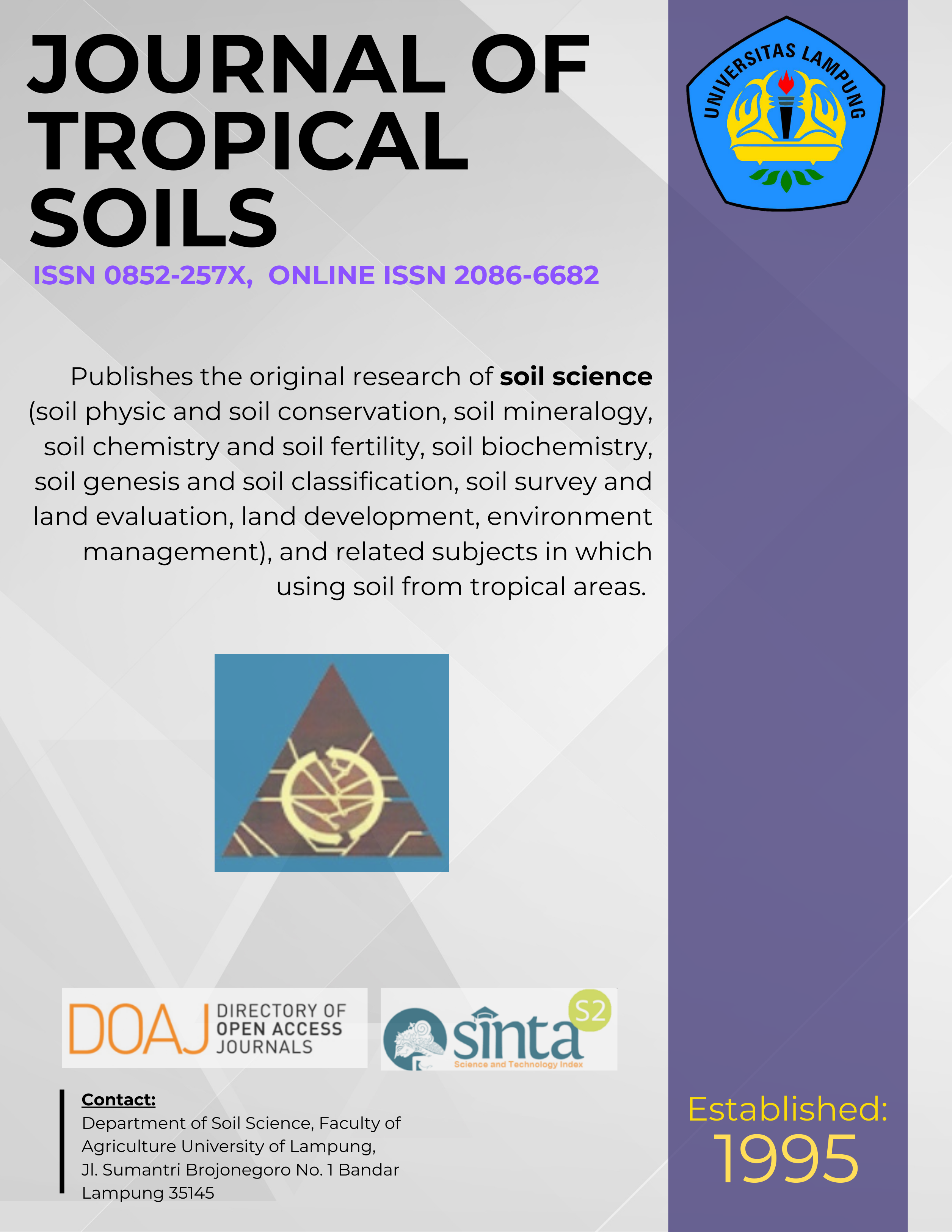Nitrogen and Phosphorous Movement Characteristic in Terrace Paddy Field Using Cascade Irrigation System in West Sumatra, Indonesia
Main Article Content
Abstract
West Sumatra is one of Indonesian rice bowl. The landscape of this province dominated by mountainous area with beautiful terrace paddy field lied from the middle slope to the lowland. The most common rice cultivation management in this area is application of cascade irrigation system with blanked amount of chemical fertilizer application. This study intends to figure out, whether this kind of paddy field management sustains and friendly to the environment or not. The results showed that cascade irrigation system created some discrepancies in suspended solid (SS), dissolve organic matter (DOM) and the nutrient movement characteristic a long the slope. The SS and DOM load and discharge strongly influenced by land preparation activities, while total and available nitrogen (N) and phosphorous (P) affected by chemical fertilizer application. In the upper part, the amount of chemical fertilizer seemed sufficient, indicated by negative amount of nutrient balance, while lower terrace show some indication of excess nutrient input. To avoid some demerit of cascade irrigation system, chemical fertilizer application should be base on site specific characteristic and taking into account of natural source contribution.
Keywords: Cascade irrigation, chemical fertilizer, nutrient balance, terrace paddy field
Downloads
Article Details
Issue
Section
License for Authors
Authors who publish with this journal agree to the following terms:
- Authors retain copyright and grant the journal right of first publication with the work simultaneously licensed under a Creative Commons Attribution License that allows others to share the work with an acknowledgement of the work's authorship and initial publication in this journal.
- Authors are able to enter into separate, additional contractual arrangements for the non-exclusive distribution of the journal's published version of the work (e.g., post it to an institutional repository or publish it in a book), with an acknowledgement of its initial publication in this journal.
- Authors are permitted and encouraged to post their work online (e.g., in institutional repositories or on their website) prior to and during the submission process, as it can lead to productive exchanges, as well as earlier and greater citation of published work (See The Effect of Open Access).
License for Regular Users
Other regular users who want to cite, distribute, remix, tweak, and build upon author’s works, even for commercial purposes, should acknowledge the work’s authorship and initial publication in this journal, licensed under a Creative Commons Attribution License.

